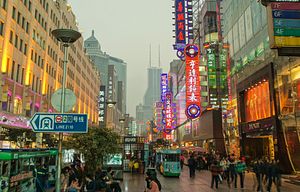China reported 6.9 percent GDP growth in the second quarter (Q2) of 2017, exceeding consensus estimates of 6.8 percent growth and delivering on Li Keqiang’s claim that the economy is on track to meet the government’s 6.5 percent GDP growth target for 2017.
Looking closer at the data, four main themes stand out:
Major pick-up in pace in June: All major indicators, including manufacturing activity, trade, and investment picked up the pace of growth in June, propelling the economy to faster growth overall in Q2 2017.
Industrial rebound: Industrial output jumped to 7.6 percent year-on-year (YoY) in June, compared with 6.7 percent average YoY growth between January and May 2017. China’s ongoing infrastructure boom, plus increased overseas demand, helped drive record steel production, as well as strong growth in auto manufacturing.
Retail acceleration: State-owned enterprise restructuring-induced job losses haven’t dampened consumer demand, with retail sales accelerating from 10.0 percent yoy in Q1 2017 to 10.8 percent YoY in Q2 2017. Sales grew 11 percent YoY in June 2017 alone. Online sales again outstripped other categories, growing 33.4 percent YoY in H1 2017 and accounting for around 18 percent of total retail sales.
China’s growth may have peaked for 2017: Despite the GDP numbers, Chinese markets were more focused on the outcome of a government work meeting that stressed the importance of containing financial risks. The Shanghai index saw its largest drop in 7 months because the meeting indicated continued monetary policy pressure on China’s debt-fueled economy.
Ultimately, the strong economic numbers paint a picture of growth and stability, which is exactly the kind of outlook that the Chinese government wants before the upcoming 19th National Party Congress in autumn 2017.
But markets are now pricing in expectations of slower growth in H2 2017, with FY2017 estimates of 6.6 percent to 6.7 percent increasingly common.
Much will depend on how the property market fares, and whether the government can continue the growth spurt in infrastructure spending that has underpinned recent growth, and I’ll be looking at both of these areas in more detail in the coming weeks.
































